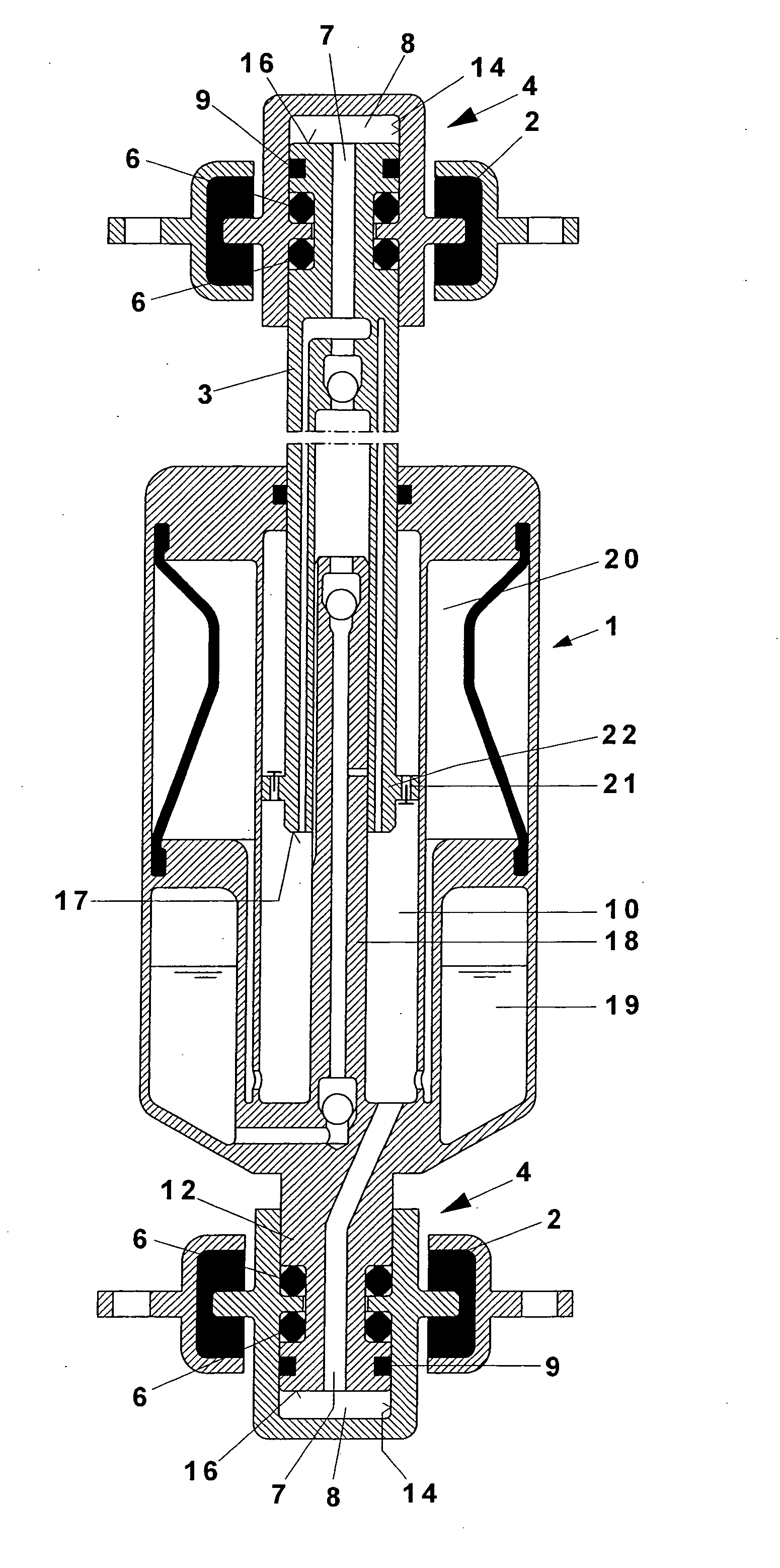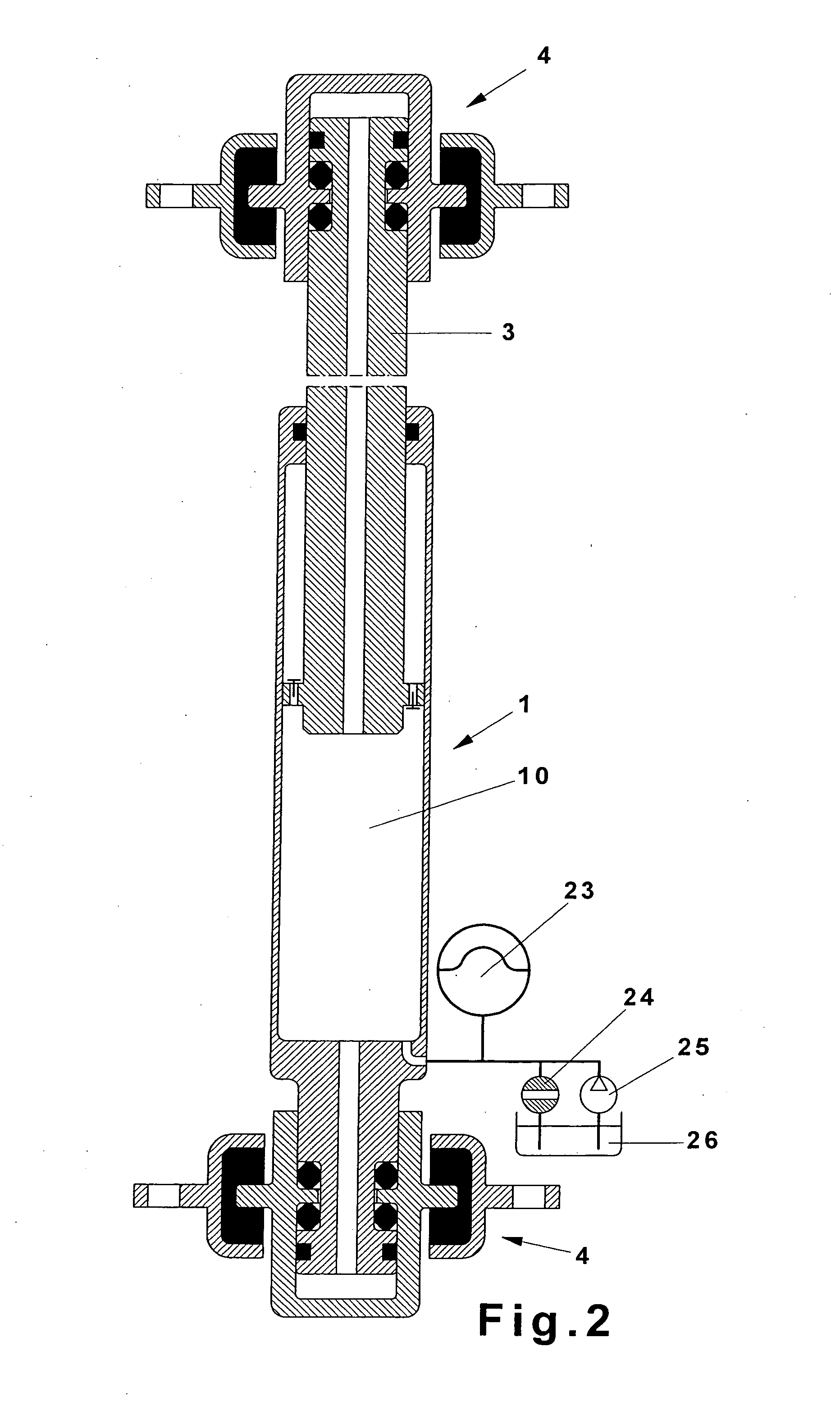Piston-cylinder unit
a technology of piston cylinder and piston cylinder, which is applied in the direction of shock absorbers, machines/engines, transportation and packaging, etc., can solve the problems of high-frequency excitation, uncomfortable sensation, transmission of vibration and noise into the passenger compartment, etc., and achieve the effect of increasing the driving comfor
- Summary
- Abstract
- Description
- Claims
- Application Information
AI Technical Summary
Benefits of technology
Problems solved by technology
Method used
Image
Examples
Embodiment Construction
[0026]A piston rod 3 of a piston-cylinder unit 1 shown in FIG. 1 includes a fastening element 4 that includes a rubber-metal part 2 so that it can be fastened to the body of a vehicle. As shown in the lower area, the cylinder of the piston-cylinder unit 1 also includes a fastening element 4 that includes another rubber-metal part 2 so that it can be connected to the axle of the motor vehicle.
[0027]Through the design of the piston-cylinder unit 1 as a hydropneumatic level control device, the piston rod 3 is brought to a predetermined level by the internal pressure of the unit as a function of load.
[0028]Each upper fastening element 4 in FIG. 1 defines a cylindrical bore 14 in which the piston rod 3 is received. The fastening element 4 is connected to the piston rod 3, in that the piston rod 3 cooperates with a radial projection of the fastening element 4 by way of elastic elements 6. The lower fastening element 4 is similarly connected to a journal 12 of the cylinder.
[0029]The fasten...
PUM
 Login to View More
Login to View More Abstract
Description
Claims
Application Information
 Login to View More
Login to View More - R&D
- Intellectual Property
- Life Sciences
- Materials
- Tech Scout
- Unparalleled Data Quality
- Higher Quality Content
- 60% Fewer Hallucinations
Browse by: Latest US Patents, China's latest patents, Technical Efficacy Thesaurus, Application Domain, Technology Topic, Popular Technical Reports.
© 2025 PatSnap. All rights reserved.Legal|Privacy policy|Modern Slavery Act Transparency Statement|Sitemap|About US| Contact US: help@patsnap.com



